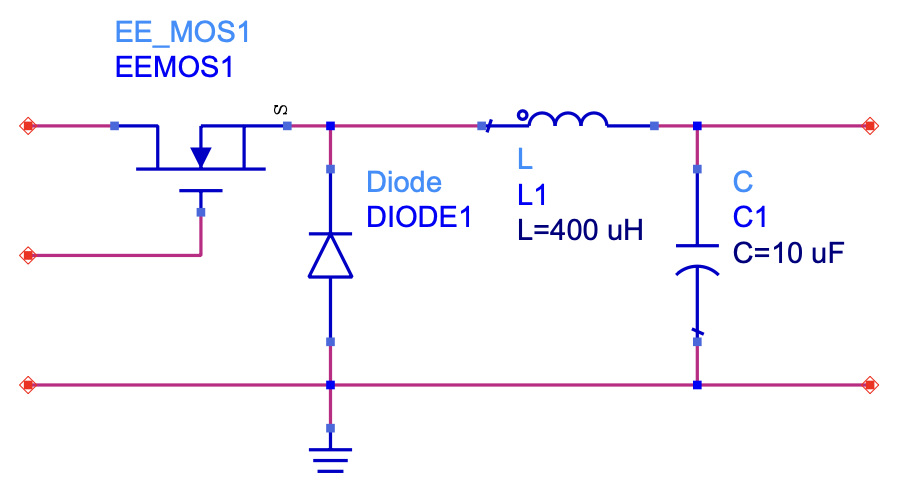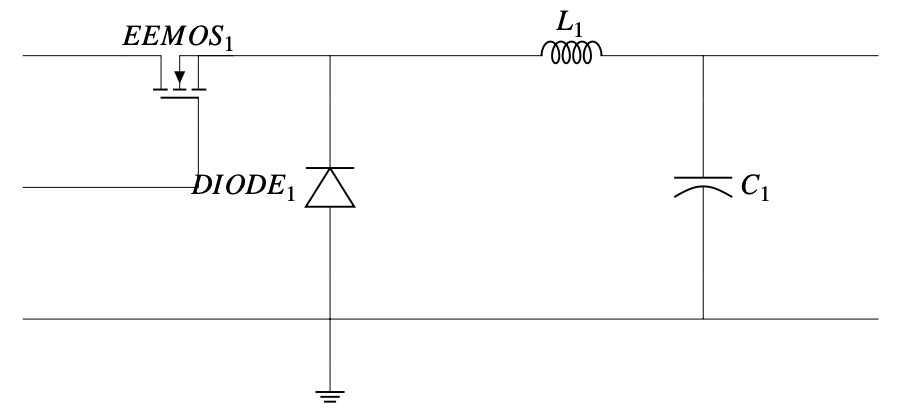abl2TikZ ("ADS Board Link to TikZ") is a Converter Tool that converts schematics already designed in your EDA design tool to CircuiTikZ. The idea is to avoid redrawing the circuitry for your document if you already have it drawn in your simulation tool. It supports every EDA tool allowing for XML export (such as Cadence Allegro, Cadence Virtuoso, Altium, etc.), though it is currently mostly maintained for Keysights Path Wave Advanced Design System (ADS). The tool runs on Windows and Unix-based systems as a command-line tool, providing TikZ code from your XML file exported from your simulation tool.
Command line tool for converting Keysight ADS schematics to CircuiTikZ
This is a Node.js package and thus an installation of node and npm (usually bundled with node) is necessary. Node.js version 18 (LTS) was used for development. It is not necessary to match this version, but it is recommended not to use outdated releases.
NPM is on some systems by default configured to install global packages to a folder only admins can access. This can be resolved either by using admin rights on every (global) package installation or by changing NPMs prefix. Global installation of this package is not necessary, but it makes using it easier, as it can be run form within any directory.
You can check your current prefix with
npm config get prefix -gand alter it with
npm config set prefix <MY-GLOBAL-PREFIX> -gNPMs documentation suggests %APPDATA%\npm or %LOCALAPPDATA%\npm for Windows and ~/.npm-global for Linux/macOS. In
order to run globally installed programs, the PATH variable should contain <MY-GLOBAL-PREFIX>/bin. As this depends
on your system and the Node.js (installer) version, it is recommended to check the documentation and your configuration
before applying any changes.
NPM provides information about this topic on several sites:
- Downloading and installing packages globally
- Resolving EACCES permissions errors when installing packages globally,
- Try the latest stable version of npm
Abl2tikz is not (yet) uploaded to a public repository like npmjs.com. In order to use it you must either download the newest release as an archive (abl2tikz-*.tgz) or pull it from GitLab.
There are three options for installing:
- install globally
- link
- install
Plain install just fetches dependencies. It can then only be executed from within the package directory. Link(ing) works similar, but also creates a link in the global prefix to this package. It can therefore be executed in any directory, as long as the package directory isn't moved or deleted. The global install instead copies the package to the global prefix and then fetches dependencies. The package (folder) can therefore be removed while the program still works within any directory.
For a global install, run the following command in a shell/command prompt. If you don't want to install globally, just
omit the -g.
npm install -g path/to/abl2tikz-x.x.x.tgz # replace with your pathIf you install locally, the program is now in node_modules/abl2tikz/. You can now (optionally) link it. To do so, you
must first change to this directory and then run npm link:
cd node_modules/abl2tikz/
npm linkClone/pull the current version from git or download from GitLab and extract the files. Open a shell or command prompt and navigate to the extracted folder. If you list the folder contents, you should see this readme file.
Then decide if you want to install locally:
npm installinstall globally:
npm install -gor install (locally) and link globally:
npm linkIf installed globally (or linked), the CLI can be run using
abl2tikz <arguments ...>Otherwise, the path to the file cli.mjs must be typed every time
node path/to/abl2tikz/cli.mjs <arguments ...>There are three supported commands:
- convert
- list-cells
- list-schematics Abl2tikz and every command have a built-in help. E.g. to show the help for convert, just type
abl2tikz convert --helpLet's say you have exported the file myProject.xml from Keysight ADS using Advanced Board Link. You can now list all
cells and schematics using
abl2tikz list-schematics myProject.xmlcreating the output
Schematics of main:
- my schematic
Schematics of connections:
- test schematic
- schematic
You could now convert the schematic my schematic from the cell main to the file innovativeSchematic.pgf:
abl2tikz convert --cellname main --schematicname "my schematic" myProject.xml innovativeSchematic.pgf
